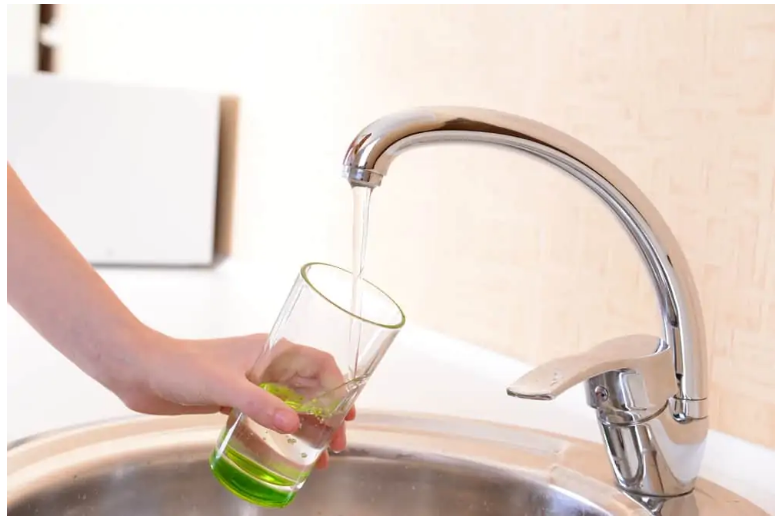Your In-Depth Manual to Managing Low Water Pressure in Your Home
Your In-Depth Manual to Managing Low Water Pressure in Your Home
Blog Article
In this article below you can discover some outstanding expertise in regards to 9 Reasons for Low Water Pressure in Your House.

Low tide stress in your house can be an irritating trouble, impacting whatever from bathing to cleaning meals. If you're experiencing weak water circulation, there are several possible reasons and options to discover. In this overview, we'll go over typical reasons for low tide pressure and practical steps to address the concern properly.
Introduction to Low Tide Pressure
Low water stress happens when the flow of water from your faucets, showers, and various other fixtures is weaker than usual. This can make everyday jobs more tough and less effective. Comprehending the causes of low water pressure is crucial to locating the best option.
Common Reasons For Low Water Stress
Faulty Pressure Regulators
Pressure regulators are accountable for maintaining regular water pressure in your house. If they malfunction, it can lead to low tide stress or unequal flow throughout the house.
Metropolitan Water Issues
In some cases, the trouble lies outside your home. Metropolitan water system problems, such as main line leakages or upkeep work, can momentarily decrease water stress in your location.
Pipe Obstructions
With time, pipes can come to be obstructed with natural resource, sediment, or debris, restricting the circulation of water. This is a common issue in older homes with galvanized steel pipes.
Corrosion
Corrosion within pipelines can result in leaks and decreased water pressure. Corrosion build-up can restrict water flow, especially in maturing plumbing systems.
Exactly How to Identify Low Tide Pressure
Checking Pipelines
Evaluate visible pipelines for indications of leaks, corrosion, or obstructions. Take notice of any kind of unusual noises, such as knocking or rattling pipelines, which might suggest concerns within the plumbing system.
Consulting with a Plumber
If you're unable to determine the source of low tide pressure, think about working with a professional plumber to carry out a complete evaluation. They can recognize underlying issues and suggest proper remedies.
Examining Taps and Fixtures
Start by evaluating the water stress at various faucets and components throughout your home. If the problem is isolated to details locations, it may suggest local issues.
Do It Yourself Solutions to Fix Low Tide Pressure
Flushing Hot Water Heater
Sediment build-up in the water heater can limit flow and reduce efficiency. Flushing the storage tank periodically assists eliminate sediment and preserve optimal efficiency.
Examining Stress Regulator
Make certain that the stress regulatory authority is operating properly. Changing or changing the regulator can aid bring back correct water stress throughout your home.
Cleaning Up Aerators and Showerheads
Natural resources can gather in aerators and showerheads, reducing water circulation. Get rid of and clean up these parts frequently to enhance water stress.
Clearing Up Clogs in Pipeline
For small obstructions, try using a plumbing serpent or chemical drainpipe cleaner to clear obstructions in pipelines. Beware when making use of chemicals and comply with safety and security guidelines.
When to Call a Professional Plumber
If DIY initiatives stop working to deal with the problem or if you believe considerable plumbing problems, it's finest to seek assistance from an accredited plumber. They have the knowledge and tools to resolve complicated problems safely and properly.
Safety Nets to Keep Water Stress
Setting Up a Pressure Booster
Take into consideration installing a pressure booster pump to enhance water stress in locations with continually reduced circulation. This can be specifically advantageous for multi-story homes or buildings with high-demand components.
Monitoring Water Usage
Bear in mind water usage practices and prevent overtaxing the plumbing system. Straightforward modifications, such as shocking showers and washing lots, can assist keep sufficient water pressure.
Regular Maintenance
Schedule routine maintenance for your plumbing system to avoid issues such as deterioration, leakages, and clogs. Addressing minor issues early can assist prevent even more substantial repairs later.
Conclusion
Dealing with low water stress can be aggravating, however recognizing the underlying causes and executing ideal options can bring back ideal circulation throughout your home. Whether it's cleaning up aerators, inspecting pipes, or seeking advice from a plumber, taking positive steps can make certain a stable supply of water for your everyday demands.
FOUR WAYS TO FIX LOW WATER PRESSURE NOW
Turning on a shower or faucet only to find the water comes out in a sad, slow drizzle is never a good feeling. How exactly are you supposed to wash a pan or take a quick shower when it takes 10 minutes just to rinse off a little soap? The good news is that when your water pressure is bad, there's always a cause: typically one that can be easily fixed. Here are some of the most common causes of low pressure and what you can do to fix the issue:
DEBRIS AND MINERAL DEPOSIT BUILDUPS
If you notice low water pressure from just one or two of the fixtures in your house, the problem likely has to do with debris buildup. Water is full of minerals and other debris, all of which can accumulate in your pipes and on your fixtures. This can cause a blockage that affects how much water flows through. To fix this, try filling a small plastic bag with white vinegar, and use a rubber band to hang it around your showerhead or faucet. Let the head of the fixture soak for a few hours, and the vinegar should loosen the deposits.
WATER LEAKS
Leaks are another common cause of low water pressure. If water is flowing out of your plumbing through a hole or crack before it can reach your fixture, the pressure coming out of the faucet or showerhead will be lower. A plumbing professional is your best bet for finding and repairing a leak in your water supply pipes.
Leaks are another common cause of low water pressure. If water is flowing out of your plumbing through a hole or crack before it can reach your fixture, the pressure coming out of the faucet or showerhead will be lower. A plumbing professional is your best bet for finding and repairing a leak in your water supply pipes.
A VALVE ISSUE
If you have low water pressure throughout your home, check your main shut-off valve to make sure it's completely open. You may also want to see if there's a pressure-reducing valve installed. If there is, have a plumber help you adjust the settings to get the pressure you're looking for.
OTHERS USING WATER
Believe it or not, your low water pressure could be caused by your neighbors. If you notice low pressure at certain times of day, it may be because you and the people living next to you have similar schedules - when everyone is showering at the same time, the pressure will be lower in every home. Low pressure throughout the neighborhood may also be caused by an issue with your municipal water supply. If that's the case, call the supplier to see if they're working on the issue.
https://www.rotorooter.com/blog/water-leaking/low-water-pressure-fixes/

We hope you liked our topic about Low Water Pressure in the House?. Thank you so much for taking the time to read our blog post. Do you know about anybody else who is very much interested in the topic? Feel free to share it. We thank you for reading our article about Dealing with Low Water Pressure in Your Home.
Call Report this page